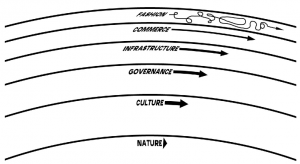World Usability Day was established in 2005 by the Usability Professionals Association. Each year, design professionals come together to discuss how to “develop technologies in a way that serves people first.” On November 8, 2018, professionals met at almost 100 locations around the world to discuss the how to “Make Life Easy.”
I attended World Usability Day at Michigan State University in East Lansing. The event included several wonderful speakers on team communication and planning, user-focused design, and accessibility. Though the topics were broad, there were a few themes that can inform not only our digital design, but how we work with colleagues and clients.
1. Communicate for understanding.
Dawn Opel, Assistant Professor at Michigan State University, discussed the importance of using “rhetorical flexibility” to engage authentically across differences. Not only do digital experiences often serve multiple user groups, but the user groups and the business may approach a topic quite differently. Opel recommended varying your language to speak to different audiences in a way that each can understand, a core content strategy practice.
This is also important to consider when you are working on a team with different roles and responsibilities represented. UX professionals often have a hard time convincing engineers to make time for usability testing; Opel discussed framing usability in ways that make sense to engineers and the way engineers are rewarded.
2. Understand the environmental pressures.
Digital experiences are, by their very nature, dynamic and immediate. UX-ers and clients want the rest of the organization to be able to respond with the same immediacy. But most organizations are slower to respond, which stymies innovative digital experiences. Digital strategists need to consider the entire environment of the experience they are designing—including the (frustrating and slow) organization.
Peter Morville of “polar-bear book” fame spoke of this in the context of planning for experiences. He referenced Stewart Brand’s Pace Layering of organizational change, where different layers of an organization (or civilization) change at different rates. From fast to slow—fashion, commerce, infrastructure, governance, culture, and nature—the fast layers innovate and the slow layers stabilize. When we are frustrated with the lack of organization responsiveness, we might ask “which layer are we trying to change?”

The order of a healthy civilization. The fast layers innovate; the slow layers stabilize. The whole combines learning with continuity. Source.
3. Dream Big (as we say at Perficient Digital), but design solutions that can be tested.
Shawn Henry of W3C’s Web Accessibility Initiative (WAI) discussed the UX implications of the new Web Content Accessibility Guidelines (WCAG) 2.1. (WCAG provides the requirements that determine the level of accessibility of a digital experience—accessibility being the foundation that makes a site usable by users with different visual, hearing, motor, and cognitive skills.)
In preparing the new WCAG requirements, WAI began with a long list of potential improvements. The committee then evaluated which of these might be testable. If WAI proposes a new requirement, it has to be something that can actually be tested and verified. If it can’t be tested, we would be unable to determine whether a digital experience is in compliance. This, too, is important to all digital design, since developing a list of requirements that can’t be verified can inhibit good implementation. Often user stories are fuzzy and unclear, raising the question of how we will know if we’ve actually met the need.
Digital design takes place within messy, complicated organizations, in ever-changing industries, and with real-life people. Applying learnings from UX to both the digital design and how we all work together can result in a more productive team—and a better digital experience.
